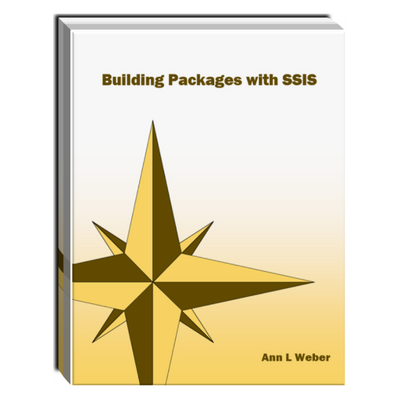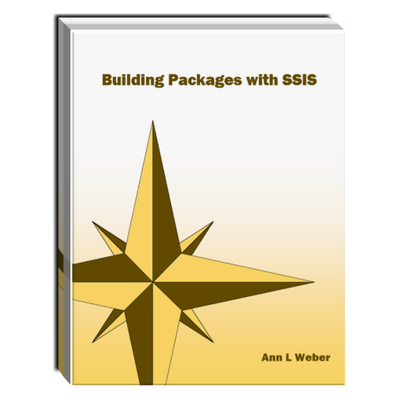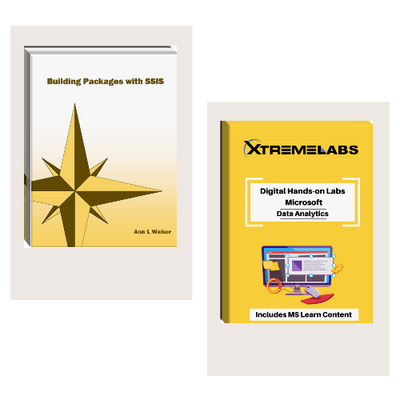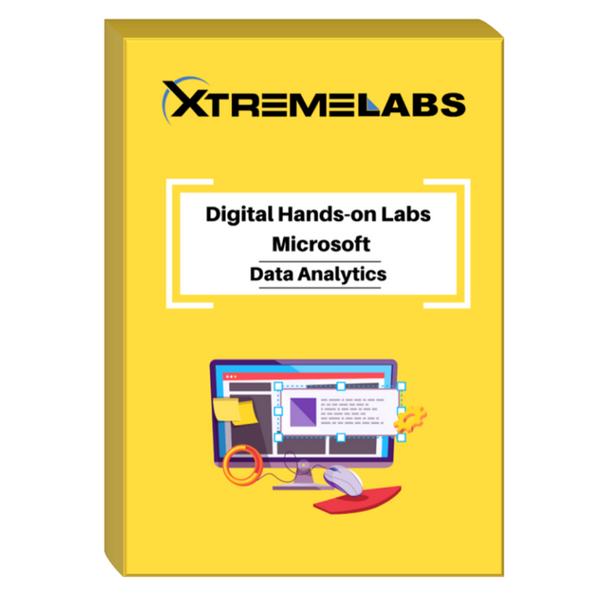Tags: building ssis packages , Courseware , microsoft data tools integration services , SQL , SQL Server , sql server integration services
55321: Building Packages with SSIS Courseware
- Brand: Ann Weber
- Availability: In Stock
$190.00
This five-day instructor-led course is intended for IT professionals who need to learn how to use SSIS to build, deploy, maintain, and secure Integration Services projects and packages, and to use SSIS to extract, transform, and load data to and from SQL Server. This course is similar to the retired...
This five-day instructor-led course is intended for IT professionals who need to learn how to use SSIS to build, deploy, maintain, and secure Integration Services projects and packages, and to use SSIS to extract, transform, and load data to and from SQL Server. This course is similar to the retired Course 20767-C: Implementing a SQL Data Warehouse but focuses more on building packages, rather than the entire data warehouse design and implementation.
Audience Profile
At Course Completion
- Create sophisticated SSIS packages for extracting, transforming, and loading data
- Use containers to efficiently control repetitive tasks and transactions
- Configure packages to dynamically adapt to environment changes
- Successfully troubleshoot packages
- Create and Manage the SSIS Catalog
- Deploy, configure, and schedule packages
- Secure the SSIS Catalog
Module 1: SSIS Overview
This module explains the purpose of SSIS and teaches how to use the Import/Export Wizard to exchange data between data structures.
Lessons
- Import/Export Wizard
- Exporting Data with the Wizard
- Common Import Concerns
- Quality Checking Imported/Exported Data
Lab 1: SSIS Overview
- Use the Import/Export Wizard from SSMS
After completing this module, students will be able to:
- Export data with the wizard.
- Import data with the wizard.
- Do a quality check on imported and exported data.
Module 2: Working with Solutions and Projects
In this module, students learn to work with SQL Server Data Tools (SSDT) to design and deploy reports.
Lessons
- Working with SQL Server Data Tools
- Understanding Solutions and Projects
- Working with the Visual Studio Interface
Lab 1: Working with Solutions and Projects
- Import and run a package in SSDT-BI
After completing this module, students will be able to:
- Work with SQL Server Data Tools.
- Understand solutions and projects.
- Work with the Visual Studio interface.
Module 3: Basic Control Flow
The Control Flow tab of the SSIS Designer is used to organize the general flow of your package execution. The control flow of a package includes different element types, such as tasks, containers, and precedence constraints. Each of these element types has a set of properties that you will use to define and manage individual instances of these elements. In this module, students learn to add containers or tasks from the SSIS Toolbox to the Control Flow Designer.
Lessons
- Working with Tasks
- Understanding Precedence Constraints
- Annotating Packages
- Grouping Tasks
- Package and Task Properties
- Connection Managers
- Favorite Tasks
Lab 1: Basic Control Flow
- Precedence Constraints and Execute SQL Task
After completing this module, students will be able to:
- Understand the control flow.
- Work with tasks.
- Understand precedence constraints.
- Annotate packages.
- Group tasks.
- Work with package and task properties.
- Work with connection managers.
Module 4: Common Tasks
Microsoft has organized the tasks in the Common section of the SSIS Toolbox alphabetically. This module will touch on the functionality of each of these tasks, and provide Try It exercises for the tasks that are most commonly seen in classes and companies.
Lessons
- Analysis Services Processing
- Bulk Insert Task
- Data Profiling Task
- Execute Package Task
- Execute Process Task
- Expression Task
- File System Task
- FTP Task
- Hadoop Tasks
- Script Task Introduction
- Send Mail Task
- Web Service Task
- XML Task
Lab 1: Common Tasks
- Create a package to copy a file and send an email message on completion
- Create a package to perform data profiling and then review the results
- Create a master package and test the execution flow of the child packages
After completing this module, students will be able to:
- Understand the Analysis Services processing task.
- Use the Bulk Insert task.
- Use the Data Profiling task.
- Use the Execute Package task.
- Use the Execute Process task.
- Use the Expression task.
- Use the File System task.
- Understand the FTP task.
- Understand the Hadoop tasks.
- Understand the Script task Introduction.
- Use the Send Mail task.
- Understand the Web Service task.
- Understand the XML task.
Module 5: Data Flow Sources and Destinations
In this module, students will learn to work with data flow sources and destinations.
Lessons
- The Data Flow Task
- The Data Flow SSIS Toolbox
- Working with Data Sources
- SSIS Data Sources
- Working with Data Destinations
- SSIS Data Destinations
Lab 1: Data Flow Sources and Destinations
- Working with Data Sources and Destinations
After completing this module, students will be able to:
- Use the Data Flow Task.
- Use the Data Flow SSIS Toolbox.
- Work with Data Sources.
- Work with Data Destinations.
Module 6: Data Flow Transformations
In this module, students learn about transformations, which allow you to modify data in the data flow pipeline.
Lessons
- Transformations
- Configuring Transformations
Lab 1: Data Flow Transformations
- Working with Derived Column Transformations
- Working with Lookup Transformations
After completing this module, students will be able to:
- Working with Derived Column Transformations
- Working with Lookup Transformations
Module 7: Making Packages Dynamic
In this module, students will learn to make SSIS packages dynamic.
Lessons
- Features for Making Packages Dynamic
- Package Parameters
- Project Parameters
- Variables
- SQL Parameters
- Expressions in Tasks
- Expressions in Connection Managers
- After Deployment
- How It All Fits Together
Lab 1: Making Packages Dynamic
- Making a Package Dynamic
After completing this module, students will be able to:
- Understand the features for making packages dynamic.
- Use package parameters.
- Use project parameters.
- Use variables.
- Use SQL parameters.
- Use expressions in tasks.
- Use expressions in connection managers.
- Understand how it all fits together.
Module 8: Containers
In this module, students learn to use containers, which provide a way to organize tasks that need to be managed together as a group.
Lessons
- Sequence Containers
- For Loop Containers
- Foreach Loop Containers
Lab 1: Containers
- Use a Foreach Loop container to send a custom email to the names found in a database view
After completing this module, students will be able to:
- Work with containers.
- Sequence containers.
- Use For Loop containers.
- Use Foreach Loop containers.
Module 9: Troubleshooting and Package Reliability
This module puts together common troubleshooting methods along with some of the reliability features for SSIS all in one place.
Lessons
- Understanding MaximumErrorCount
- Breakpoints
- Redirecting Error Rows
- Logging
- Event Handlers
- Using Checkpoints
- Transactions
Lab 1: Troubleshooting and Package Reliability
- Creating a Script Task to Merge Error Messages
- Configure a package to use transactions
After completing this module, students will be able to:
- Understand MaximumErrorCount.
- Work with breakpoints.
- Redirect error rows.
- Understand Package Logging.
- Use Event Handlers.
- Use the Checkpoint feature.
- Use Transactions.
Module 10: Deploying to the SSIS Catalog
The project deployment model provides the framework for new functionality such as the SSIS catalog, environments, project level parameters and project level connection managers. This module explains how to deploy projects to the SSIS catalog.
Lessons
- The SSIS Catalog
- Deploying Projects
- Working with Environments
- Executing Packages in SSMS
- Executing Packages from the Command Line
- Deployment Model Differences
Lab 1: Deploying to the SSIS Catalog
- Deploying a Project to the SSIS Catalog
- Manually executing a Package
After completing this module, students will be able to:
- Understand SSIS deployment and the SSIS catalog.
- Deploy Projects.
- Work with Environments.
- Execute packages in SSMS.
- Execute packages from the command line.
Module 11: Installing and Administering SSIS
In this module, students will learn to install, upgrade, and administer SSIS.
Lessons
- Installing SSIS
- Upgrading SSIS
- Managing the SSIS Catalog
- Viewing Built-in SSIS Reports
- Managing SSIS Logging and Operation Histories
- Automating Package Execution
Lab 1: Installing and Administering SSIS
- Automating Package Execution
After completing this module, students will be able to:
- Install SSIS.
- Upgrade SSIS.
- Manage the SSIS catalog.
- View built-in SSIS reports.
- Manage SSIS logging and operation histories.
- Automate package execution.
Module 12: Securing the SSIS Catalog
In addition to the standard SQL Server database and instance permissions that can be configured like any other database, the SSIS catalog has special pre-defined database roles and additional permissions that can be assigned for the management and execution of SSIS packages. In this module, students learn to work with roles and permissions to secure the SSIS catalog.
Lessons
- Principals
- Securables
- Grantable Permissions
- Granting Permissions
- Configuring Proxy Accounts
Lab 1: Securing the SSIS Catalog
- Securing the SSIS Catalog
After completing this module, students will be able to:
- Understand principals.
- Understand securables.
- Grant Permissions.
- Configure proxy accounts.




